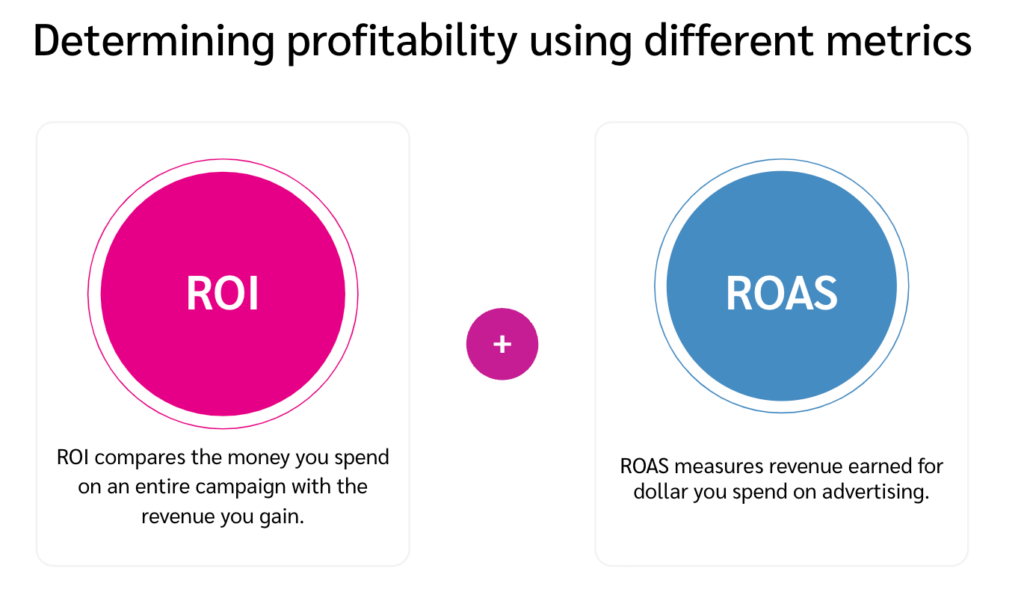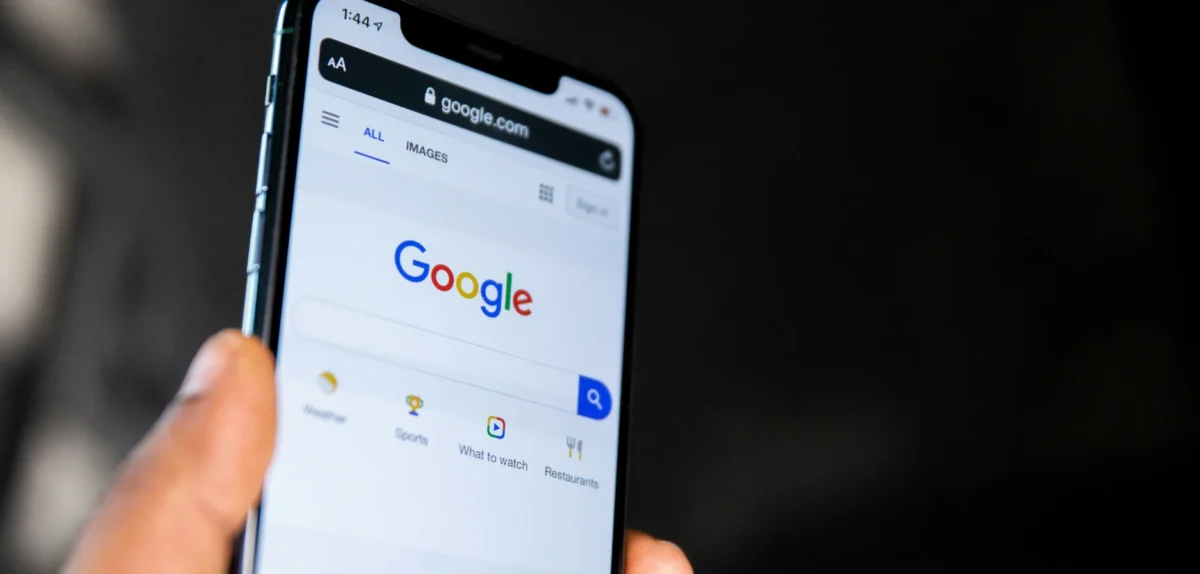In a digital age with so many platforms and strategies to choose from, which key performance metric (KPI) should you focus on to achieve the most significant marketing success? Brands rely on return on investment (ROI) as the go-to metric.
However, return on ad spend (ROAS) can provide in-depth insights, too. Determining the profitability using these metrics can help highlight whether the campaign is successful.
What’s the difference between ROI and ROAS?
ROI is gained revenue after ad spend
ROI compares the money you spend on an entire campaign with the revenue you gain. Brands track ROI with an online ad strategy such as PPC or click-through rates of social media posts and emails. However, content marketing, like podcasts and blog posts, takes a different approach. Linking this content to a landing page provides more accurate customer journey tracking.
How to calculate ROI
ROI = (revenue – costs) ÷ costs x 100
Example:
A large retail group wants to launch its new summer collection. They craft a digital marketing campaign to gain exposure and create hype ahead of the summer season. The campaign generates $100,000 in sales. Overall they spent $25,000 on advertising but accrued additional costs of $45,000 in software, project management, design, and more, to take into account.
(100,000 – (25,000 + 45,000)) ÷ 70,000 x 100 = 42%
The ROI formula concludes the campaign’s performance was good and profitable.
ROAS is return on ad spend
ROAS is the first cousin of ROI. Instead of measuring the return of the entire campaign, ROAS zooms in on a single component of the campaign. Brands more widely use ROAS with PPC ads, like Google Ads or display ads, which makes it easier to calculate.
How to calculate ROAS
ROAS = revenue from ad campaign ÷ cost of ad campaign
Example:
You launched a new product on your e-commerce website, ensuring the copy, visuals, and SEO is on point. To generate better traction for your new product, you decide to spend $500 on advertising your new product online. You generate $2,500 in revenue and think the campaign is successful. But was it successful?
2,500 ÷ 500 = 5%
The ROAS ratio for the campaign is 5:1—right on target with your benchmark. The result of the formula validates your advertising decision.

ROAS takes revenue into account and considers only direct spending on the ad. Conversely, ROI takes profit into account and considers direct spending along with other expenditures.
Which one should you use?
Multi-channel Customer Journey
Companies focus on various channels to gain exposure, leads, or sales. Therefore, multi-channel consumer journeys can be long-winded. This journey occurs when a customer clicks on two or more channels to solve the same inquiry or problem. Each time a customer reaches a new channel, they have to start their investigations from the beginning.
Part of an effective marketing campaign is creating a seamless conversion path with multiple touchpoints, leading the customer to become a lead or make a purchase. Focus beyond a simple last-click method, and invest in various touchpoints in the customer journey. Understanding the cross-channel effect and its role in the customer journey can navigate brands to invest in the correct touchpoints to increase their ROI or ROAS.
What’s the best way to analyze campaign performance?
When deciding which performance metric to use, it’s not an either/or situation. ROI can help you understand long-term profitability, whereas ROAS might be more suited for short-term strategies. ROI and ROAS formulas will help you more accurately determine an effective marketing campaign.
Focus on channels that work best for your brand to create a seamless conversion path. Choose fewer, more effective channels like SEO, PPC, social media, or email. Fewer channels allow you to reallocate your budget to maximize your returns, leading to an increased ROI or ROAS.
Tips for boosting ROI and ROAS
1. Set your benchmark
A good marketing ROI is usually a ratio of 5:1. So for every $1 you spend, you make $5. A standard ROAS benchmark is slightly lower, with a 4:1 ratio. This means for every $4 revenue, your brand spent $1. Many argue that a 2:1 ratio is not a profitable ratio. The campaign would therefore need to be reviewed. These benchmarks are only general guidelines. Each company is unique, so it’s up to your team to determine which benchmark will suit you.
2. Test again
Testing is vital to determining which marketing campaign works best for your company. Experiment with new copy, visuals, or links to narrow down what your audience responds to. These experiments will improve existing campaigns and provide a better starting point when launching new ones.
3. Get high-value users back on board
Conducting tests will help you gain more insight into which ads are working. Easily track your customer journey, various touchpoints, and what path leads to the best conversions with the help of impact.com’s tools – all on one platform.

The verdict
Optimize your campaigns using both metrics for better insights to improve the overall campaign. Calculating your ROI showcases the bigger picture of the campaign’s spend and profit, indicating if the advertising was profitable for the company. In contrast, ROAS looks at the direct spend on a particular element rather than other campaign costs that can have an influence. For that reason, ROAS can give better insight into specific strategies to improve your online marketing.
Keep close tabs on your metrics by using impact.com’s tools to assist you in making informed decisions about which ads to invest in and making them more efficient.
Do you need help with ROI and ROAS? impact.com can help you learn more about performance metrics. Check out our PXA course, “Optimize impact.com Product Training – Associate.”
Learn how other brands increase their ROAS of partnerships programs here:




